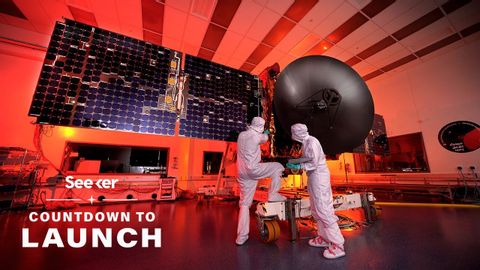
Subtitles & vocabulary
The UAE’s Hope Probe Will Make History As It Heads to Mars
00
Summer posted on 2020/07/30Save
Video vocabulary
presence
US /ˈprɛzəns/
・
UK /ˈprezns/
- Noun
- The same place or area that a person is
- Ability to reach a market, group of people etc.
A2
More unprecedented
US /ʌnˈprɛsɪˌdɛntɪd/
・
UK /ʌnˈpresɪdentɪd/
- Adjective
- Not having happened before, or to such a degree
B1
More achieve
US /əˈtʃiv/
・
UK /ə'tʃi:v/
- Transitive Verb
- To succeed in doing good, usually by working hard
- To succeed in reaching a particular goal, status, or standard, often after effort or perseverance.
A2TOEIC
More impressive
US /ɪmˈprɛsɪv/
・
UK /ɪmˈpresɪv/
- Adjective
- Causing admiration or respect; grand or expensive
- Having a strong effect, commanding attention.
B1TOEIC
More Use Energy
Unlock All Vocabulary
Unlock pronunciation, explanations, and filters
